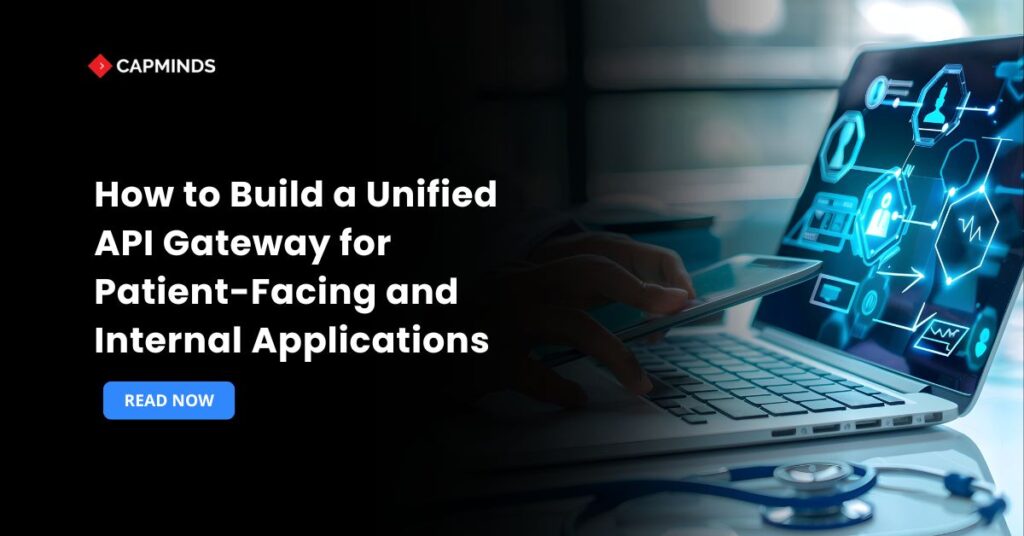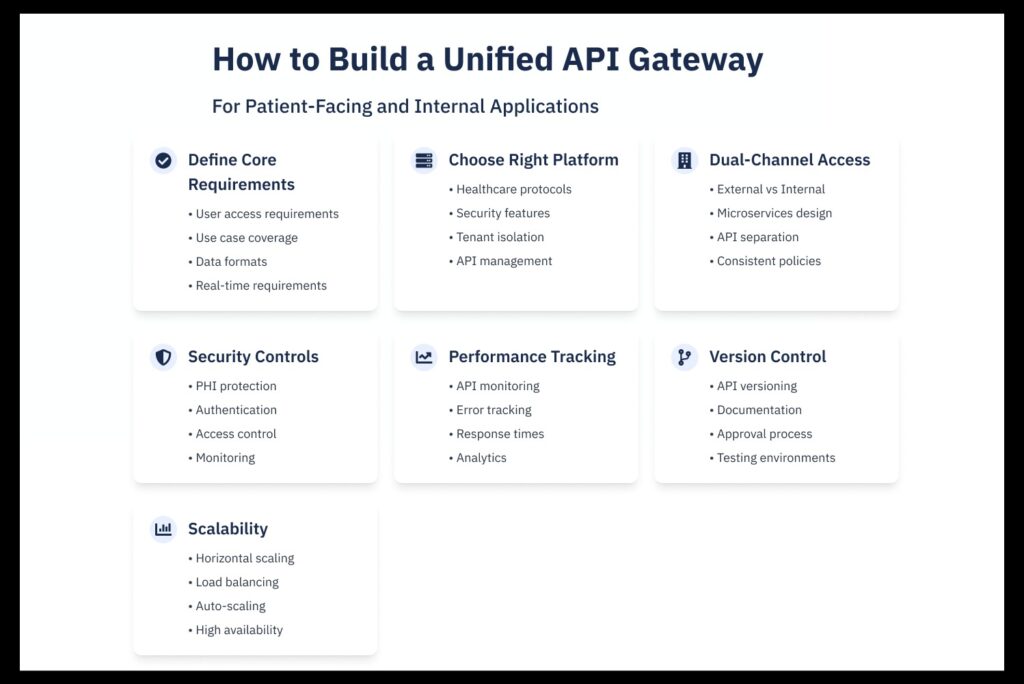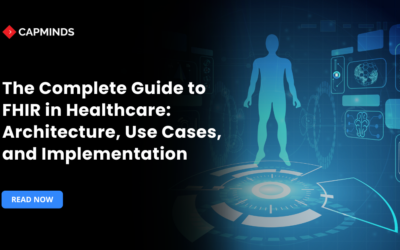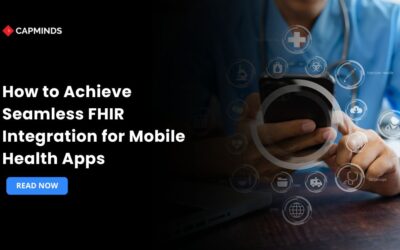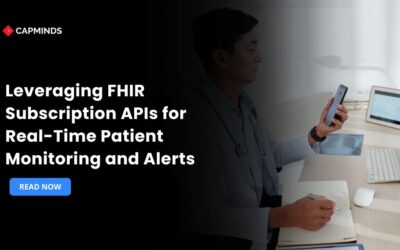How to Build a Unified API Gateway for Patient-Facing and Internal Applications
Healthcare organizations work in complicated digital settings. From patient portals and telehealth applications to EHR systems and billing software, each application creates and consumes essential healthcare information. Without a consistent API gateway, managing communication between different systems becomes disorganized, resulting in delays, security threats, and data silos.
A unified API gateway serves as the primary entry point for all API traffic. It allows for safe, scalable, and efficient communication between patient-facing apps and backend systems like EHRs, lab databases, and practice management tools.
In this blog, you’ll learn how to create a powerful API gateway that connects these levels while ensuring high availability, compliance, and user experience.
1. Define the Core Integration Requirements
The integration objectives of your system should be well understood before developing a single API gateway. Finding out how data flows between your internal systems, like EHRs, billing platforms, and inventory management, and your patient-facing applications, such patient portals or mobile apps, is the first step in this process.
Defining these essential objectives upfront prevents rework and ensures that the gateway meets both clinical and corporate goals.
Collaborate with stakeholders from the IT, compliance, clinical, and operations departments to figure out:
- Types of users, like patients, providers, staff, suppliers, and their access requirements
- The API must cover the following use cases such as arranging appointments, getting test results, and filing claims.
- The data sources and formats involved HL7 v2 messages, FHIR resources, JSON payloads, and SQL-based searches.
- The frequency and real-time requirements of data interchange, like polling vs. event-driven updates.
2. Choose the Right API Gateway Platform
Selecting an appropriate API gateway platform is critical. AWS API Gateway and Azure API Management are some of the popular open-source and commercial choices. Each has distinct advantages in terms of flexibility, scalability, and security.
- Support for healthcare-specific protocols such as FHIR and HL7.
- Rate-limiting and throttling to manage user and mobile app traffic.
- Token validation, OpenID Connect, and OAuth 2.0 are all integrated security features.
- Monitoring and analytics to audit API usage and performance data.
Multi-hospital organizations need tenant isolation. Each facility needs separate data boundaries while sharing common services.
Switching from multiple service endpoints to a single gateway gives you better control. New APIs can be added faster with consistent policies.
3. Architect for Dual-Channel Access: External and Internal
Your gateway must support two unique consumer groups, such as external users like patients and partners, and internal users like workers and systems. To manage this:
- Create separate routing layers for internal and patient-facing applications.
- Use a microservices design so that each service may grow on its own.
- Keep private and public APIs apart to prevent inadvertently disclosing private activities.
A patient mobile app calls a public API to view test results. At the same time, a lab interface engine uses an internal API to submit new results. Both requests go through the same gateway but follow different routing rules.
4. Implement Strong Security and Access Controls
Security is essential when it comes to PHI. The first line of defense against dangers like denial-of-service assaults, injection attacks, and security breaches should be your API gateway.
- TLS encrypts all incoming and outgoing traffic
- Token-based authentication with OAuth 2.0 or JWT
- Role-based access control is used to limit internal vs external permissions.
- IP Whitelisting and Geofencing for Internal Systems
- Real-time monitoring and audit recording to identify unusual activity
A HIPAA-compliant API gateway should additionally log all access to PHI, encrypt data at rest and in transit, and provide data masking options for less-privileged users.
5. Track, Record, and Enhance API Performance
Your gateway is kept operating smoothly by constant monitoring. Make use of observability technologies such as cloud provider dashboards, Grafana, or Prometheus.
- API Latency and Response Times
- Error rate and HTTP status codes
- Throughput and Request Volume
- Authentication errors and abnormalities
By regularly analyzing logs, you may find performance difficulties, spot abuse, and enhance response times. The DevOps team may proactively address problems before they have an impact on consumers by using automated notifications.
6. Enable API Versioning and Governance
Your API endpoints will change along with your healthcare platform. Versioning avoids service interruptions when modifications are made. It also provides backward compatibility with older clients.
Best governance practices include:
- Naming conventions: /v1/patients, /v2/labs
- API deprecation policy and sunset timelines
- Centralized documentation using Swagger or Redoc
- Approval processes before new APIs go online
- Sandboxed environments to test new API versions
7. Design for Scalability and High Availability
Healthcare API traffic changes a lot. Peak hours, system updates, and emergencies create usage spikes. Your gateway must scale horizontally and provide 24/7 availability.
Strategies for Scalability:
- Use Docker or Kubernetes to containerize your gateway for rapid horizontal scaling.
- To equally divide traffic among gateway instances, set up load balancers.
- To manage surges without generating downtime, use auto-scaling techniques.
Strategies for High Availability:
- Install backup gateways in many locations or availability zones.
- Set up failover procedures and health checks to instantly reroute traffic during outages.
- To manage degraded services gracefully, use rate limiters and circuit breakers.
Related: How to Align FHIR API Development With USCDI and TEFCA Compliance
Build API Gateways That Power Connected Healthcare With CapMinds
Healthcare interoperability begins with robust APIs. At CapMinds, we help you go beyond fragmented systems by designing, deploying, and managing secure API gateways that ensure seamless data exchange between your patient-facing apps and backend platforms.
Whether you’re integrating EHRs, telehealth modules, lab interfaces, or billing systems, our health-tech experts deliver scalable solutions built for compliance, resilience, and speed.
Our API & Interoperability Services Include:
- Custom API Gateway Architecture for Healthcare
- HL7 and FHIR Integration
- Secure OAuth2.0 & OpenID Authentication Setup
- API Monitoring & Logging Solutions
- EHR and Practice Management System Integration
Get in touch with CapMinds to transform your API landscape and unlock the power of connected care.
